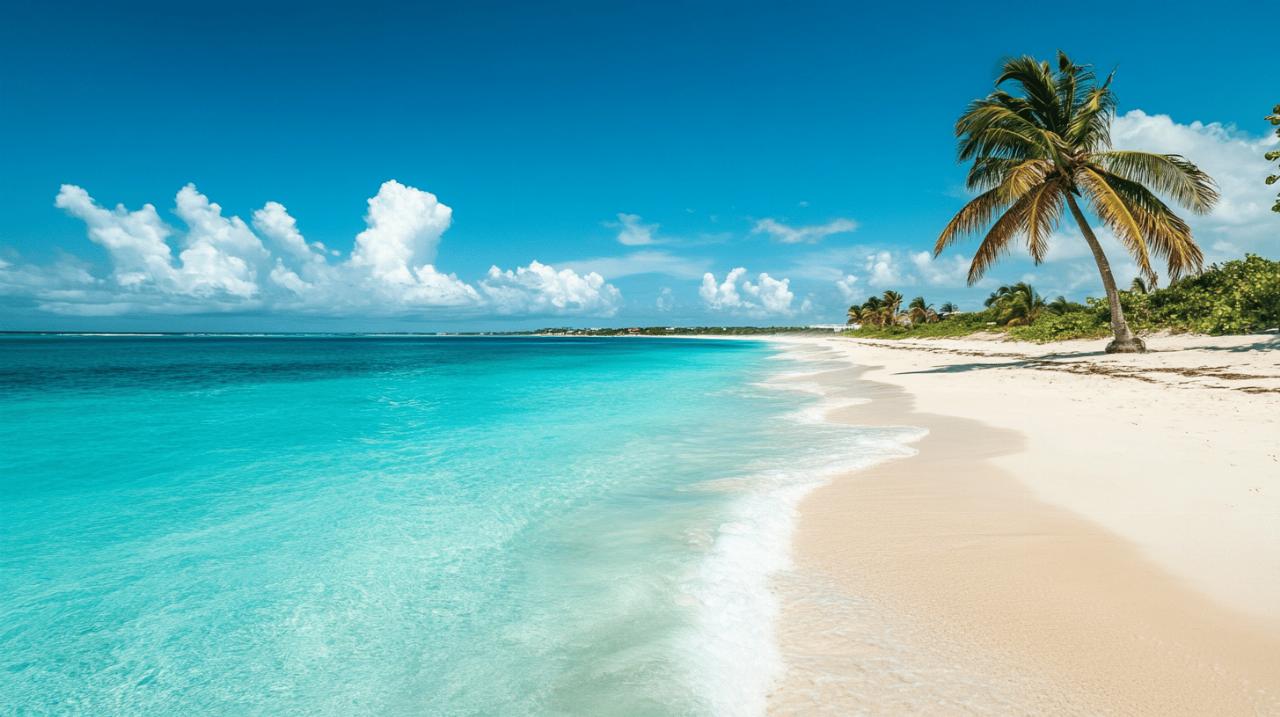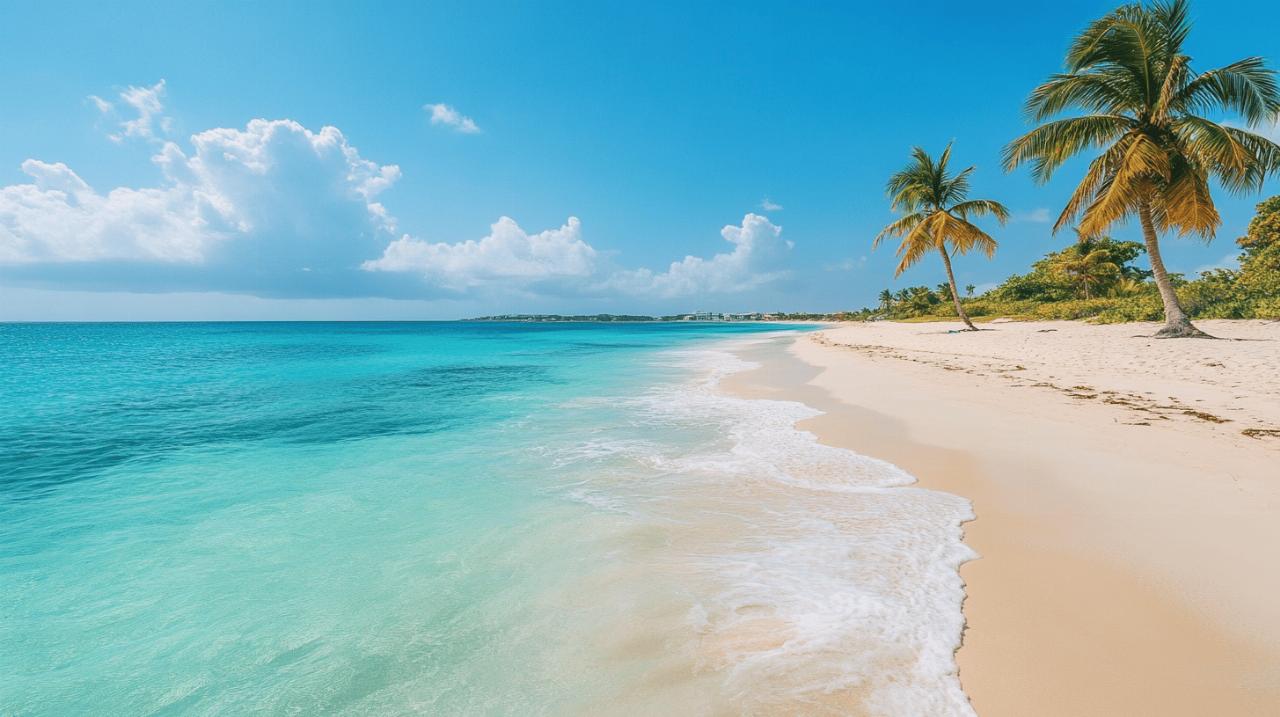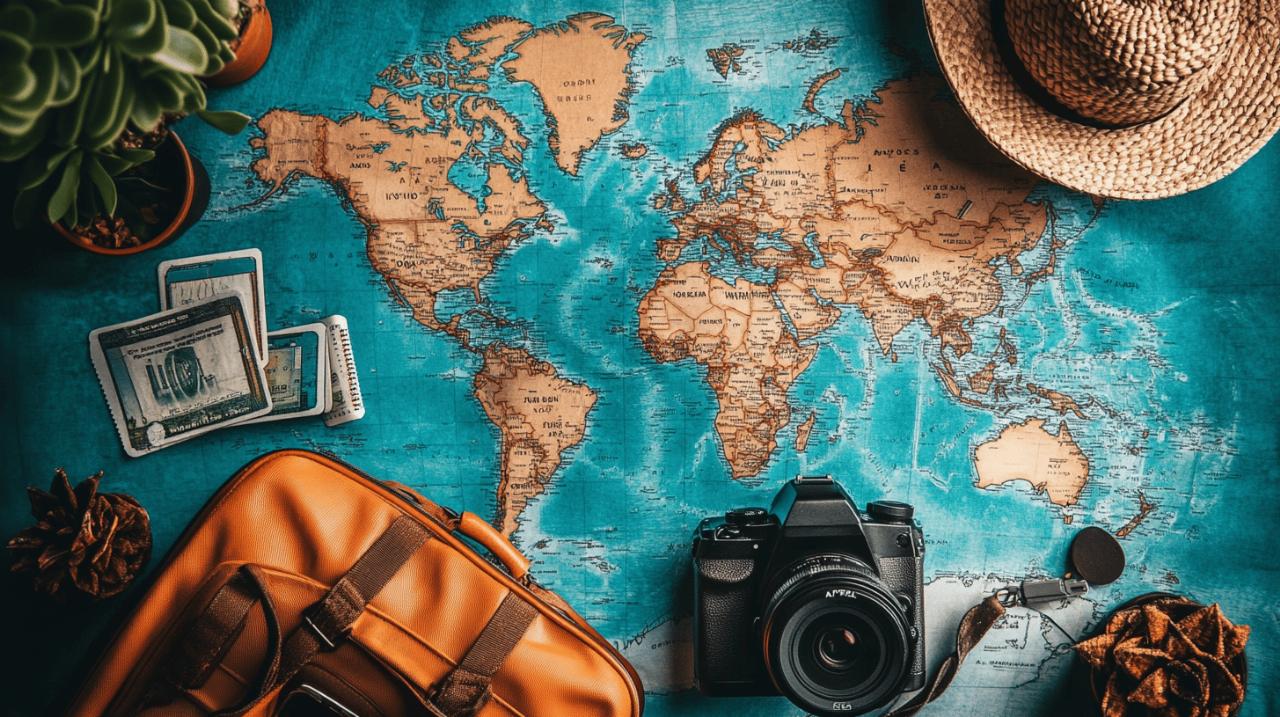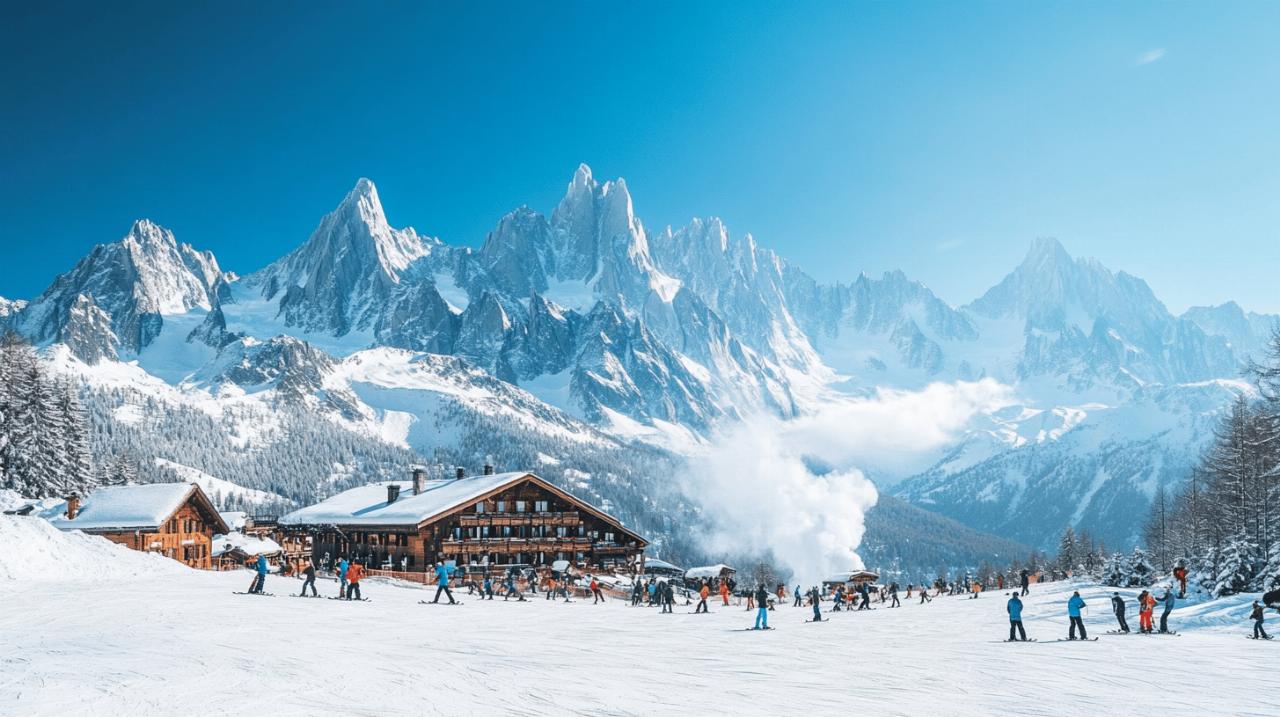Les plages incontournables à Anguilla: The Best Beaches for Snorkelling Enthusiasts and Underwater Explorers
Nestled in the northern Lesser Antilles, Anguilla stands as a British Overseas Territory where turquoise waters meet powdery white sands, creating an idyllic setting for those who seek both relaxation and underwater adventure. For snorkelling enthusiasts and underwater explorers, this Caribbean gem offers a wealth of opportunities to discover vibrant coral reefs, encounter graceful sea turtles, and swim alongside colourful tropical fish in some of the most pristine marine environments the region has to offer.
Premier-Class Snorkelling Spots: Where to Dive into Anguilla's Underwater Treasures
Anguilla's coastline is dotted with exceptional snorkelling locations, each offering a unique glimpse into the island's rich marine biodiversity. From easily accessible shore entries to more secluded offshore cays, the variety of sites ensures that snorkellers of all experience levels can find their perfect underwater playground.
Little bay: a hidden gem for marine life encounters
Tucked away along the island's rugged coastline, Little Bay presents a secluded haven that rewards adventurous snorkellers with some of the finest underwater vistas in Anguilla. Accessible primarily by boat or kayak, with transfers typically costing around twenty dollars for a return journey, this intimate bay has historically remained somewhat under the radar, though its popularity has been steadily growing. The journey itself often begins from Crocus Bay, where local boat operators such as Calvin have been ferrying visitors to this hidden treasure for years, offering not just transport but also invaluable local knowledge about the best spots and times to explore.
Once you slip beneath the surface at Little Bay, you enter a world where coral formations cling to rocky outcrops and marine life thrives in the clear, protected waters. The bay's inshore areas provide excellent snorkelling opportunities right from the moment you enter the water, with colourful reef fish darting between coral heads and curious creatures emerging from crevices in the rocks. Sharp-eyed snorkellers might spot the remarkable Red Eye Sponge Crab, affectionately nicknamed Sponge Bob by locals, as it scuttles along the seabed camouflaged beneath a living sponge. Above the waterline, the dramatic cliffs surrounding the bay serve as nesting sites for Red-billed Tropicbirds, which can often be seen diving spectacularly into the sea in pursuit of their lunch, adding an extra dimension to the snorkelling experience.
Prickly pear cays: exploring vibrant coral gardens
Located approximately eight kilometres north of Anguilla's main island, the Prickly Pear Cays represent the pinnacle of Caribbean snorkelling experiences. These uninhabited offshore islands, particularly the Eastern Cay, offer crystal-clear waters and thriving coral gardens that support an abundance of marine life. The journey to these cays, whether arranged from Anguilla itself or as a day trip from neighbouring Sint Maarten, builds anticipation as the boat cuts through azure waters towards these remote specks of paradise.
The Eastern Cay features a rocky southern shoreline that gives way to a sandy beach on the northern side, providing multiple entry points for snorkellers to access the surrounding reefs. The underwater landscape here is characterised by healthy coral formations that create a three-dimensional habitat for countless species of tropical fish. Schools of colourful reef fish move in synchronised waves across the reefs, whilst larger predators such as nurse sharks can occasionally be spotted gliding gracefully along the seafloor. The exceptional water clarity around Prickly Pear allows snorkellers to fully appreciate the intricate details of the coral ecosystem, from tiny Christmas Tree Worms unfurling their delicate spirals to larger structures adorned with vibrant sponges and soft corals. What makes this location even more appealing is the presence of a restaurant and bar on the eastern island, allowing visitors to combine their underwater exploration with a leisurely meal and refreshments, making for a full day's adventure in this remote corner of the Caribbean.
Essential Kit and Practical Tips for Underwater Exploration in Anguilla
Proper preparation can make the difference between a memorable snorkelling experience and a disappointing one. Understanding what equipment to bring and knowing the optimal conditions for underwater visibility will help ensure that your time beneath the waves in Anguilla is both safe and rewarding.
What to Pack: Snorkelling Gear and Safety Equipment
Whilst some of Anguilla's more developed beaches offer equipment rentals, serious snorkelling enthusiasts will want to bring their own gear to ensure the best fit and comfort. A well-fitting mask is perhaps the most crucial piece of equipment, as even a small leak can transform a pleasant swim into a frustrating experience. Investing in a quality mask with a silicone skirt that moulds comfortably to your face will pay dividends throughout your underwater adventures. Similarly, a good snorkel with a comfortable mouthpiece and an efficient purge valve can make extended sessions in the water far more enjoyable.
Fins are another essential consideration, particularly for locations such as Crocus Bay or Limestone Bay where you might need to swim longer distances or contend with currents. Powerful flippers provide the propulsion needed to explore more remote sections of reef without exhausting yourself, and they also serve as a safety feature should you encounter unexpected currents. Beyond the basic snorkelling trinity of mask, snorkel, and fins, consider packing a rashguard or wetsuit for sun protection and thermal comfort, even in the warm Caribbean waters. Anguilla's tropical sun can be surprisingly intense, and protecting your back and shoulders from sunburn will allow you to spend more time in the water without discomfort. Additionally, bringing along a waterproof camera or housing for your phone means you can capture memories of the incredible marine life you encounter, from elegant Hawksbill Turtles gliding past to the vivid colours of Queen Angel Fish posing against the coral backdrop.
Best Times and Conditions for Underwater Visibility
Timing your snorkelling adventures to coincide with optimal conditions can dramatically enhance your underwater experience. In Anguilla, the period from mid-February through to the end of May is widely regarded as the finest time for snorkelling, as this window falls within the latter half of the dry season when rainfall is minimal and winds are reduced. During these months, the water clarity reaches its peak, allowing visibility that can extend for many metres across the reefs, revealing the full splendour of the coral gardens and their inhabitants.
Water temperature in Anguilla remains pleasantly warm throughout the year, though it does fluctuate slightly with the seasons. During January and February, temperatures may dip to around twenty-six degrees Celsius, which some snorkellers find refreshingly cool, whilst from April onwards the water warms to between twenty-eight and twenty-nine degrees Celsius, creating bathwater-like conditions that allow for extended sessions without any chill. The dry season also brings calmer seas, which is particularly important for locations on the northwest coast such as Limestone Bay, where rougher conditions can make access challenging or even impossible. Conversely, the period from June through October should generally be avoided for snorkelling trips, as this coincides with the rainy season and the potential for hurricanes and tropical storms, which not only create hazardous conditions but can also stir up sediment and reduce visibility. Another consideration is the occasional presence of Sargassum seaweed, which can accumulate in certain bays such as Pelican Bay depending on ocean currents and wind patterns. Checking local conditions before heading out can help you avoid beaches where seaweed might impede your snorkelling plans.
Beyond the surface: discovering anguilla's rich marine biodiversity
The waters surrounding Anguilla support a remarkably diverse ecosystem, where coral reefs create complex habitats that support everything from microscopic organisms to large pelagic visitors. Understanding and appreciating this biodiversity adds depth to the snorkelling experience, transforming a simple swim into an educational journey through one of nature's most intricate environments.
Tropical fish species and colourful coral formations
The reefs around Anguilla serve as home to an impressive array of tropical fish species, many of which display colours and patterns that seem almost too vivid to be real. Among the most commonly encountered residents are the Sergeant Major fish, with their distinctive black bars against a yellow-green body, often seen in large groups defending their territory or feeding in the water column. Parrotfish, named for their bright colours and beak-like mouths, play a crucial ecological role by grazing on algae and dead coral, and their constant munching can often be heard underwater as a series of crunching sounds. Blue Tangs, those electric-blue surgeonfish made famous by popular animation, school together in groups that shimmer as they move across the reef, whilst their relatives the Ocean Surgeons display equally stunning colouration.
More solitary but equally captivating are the various species of angelfish that inhabit Anguilla's reefs. The French Angel Fish, with its yellow scales edged in black, creates a mesmerising sight as it glides between coral formations, whilst the Queen Angel Fish displays even more elaborate colouration with electric blue and yellow markings that make it one of the most photographed species in Caribbean waters. Spotted Moray eels can often be found tucked into crevices during daylight hours, their heads protruding as they watch the world go by, whilst Nassau Groupers lurk in the shadows, their camouflage so effective that they often go unnoticed until they move. The arrival of the invasive Lionfish has added a new and somewhat controversial element to the underwater landscape, as these striking but venomous fish, with their elaborate fins and bold stripes, now compete with native species whilst fascinating snorkellers with their alien appearance.
The coral formations themselves form the foundation of this vibrant ecosystem, creating the three-dimensional structure that supports such diversity. Fields of Gorgonians, also known as sea fans or soft corals, wave gently in the current at spots such as Limestone Bay, their delicate branches filtering the water for plankton. Christmas Tree Worms add splashes of colour to brain corals and boulder corals, their twin spirals of feeding appendages retracting instantly at the first sign of danger. Feather Duster Worms create similar displays, though on a larger scale, whilst tube worms and bristle worms contribute to the reef's cleanup crew. However, snorkellers must remain cautious of Blade Fire Coral, which despite its attractive appearance can deliver a painful sting if touched, serving as a reminder that respecting the reef means keeping a safe distance from all its inhabitants.
Responsible snorkelling: protecting anguilla's underwater ecosystems
As awareness of environmental issues has grown, so too has the understanding that snorkellers and divers play a crucial role in either protecting or degrading the very reefs they come to admire. Responsible snorkelling practices are not merely suggestions but essential guidelines that help ensure these fragile ecosystems survive for future generations to enjoy. The most fundamental principle is to never touch, stand on, or damage the coral reef in any way. Coral polyps are living animals that can be easily damaged by contact, and a single thoughtless footfall can destroy decades of growth. Maintaining proper buoyancy and fin control prevents accidental contact with the reef, and in shallow areas, swimming horizontally rather than standing up helps avoid destructive impacts.
The Anguilla National Trust and various conservation organisations have worked diligently to promote reef protection and marine conservation across the island, establishing guidelines and educational programmes that help visitors understand the importance of these ecosystems. Snorkellers can contribute to these efforts by refusing to collect shells, coral fragments, or other souvenirs from the marine environment, as removing these items disrupts the ecological balance and is often illegal in protected areas. When taking photographs, care should be taken to avoid chasing or harassing marine life, as this can cause stress to the animals and alter their natural behaviours. Feeding fish or other creatures should also be avoided, despite its popularity at some tourist locations, as it can lead to dependency on human-provided food and aggressive behaviour towards snorkellers.
Choosing environmentally friendly sunscreen is another important consideration, as conventional sunscreens containing oxybenzone and octinoxate have been shown to damage coral reefs even in small concentrations. Reef-safe alternatives using mineral-based ingredients such as zinc oxide or titanium dioxide provide protection without the harmful environmental impact. Supporting local businesses and tour operators who demonstrate a commitment to sustainable tourism and marine conservation also helps promote responsible practices throughout the industry. By adopting these responsible snorkelling behaviours, visitors to Anguilla can ensure that the underwater treasures they enjoy today will continue to thrive and delight future generations of snorkellers and marine enthusiasts.
Planning your snorkelling adventure: practical information and top recommendations
Successfully planning a snorkelling-focused trip to Anguilla requires consideration of various practical factors, from choosing between guided tours and independent exploration to selecting accommodation that provides easy access to the best underwater sites. Thoughtful planning ensures that your time on the island is spent maximising your underwater adventures rather than dealing with logistical challenges.
Guided tours versus independent exploration: what's right for you
The decision between joining organised snorkelling tours or exploring independently depends largely on your experience level, comfort in the water, and desire for local expertise. Guided tours offer several distinct advantages, particularly for those unfamiliar with Anguilla's waters or those seeking to access more remote locations such as Prickly Pear Cays or Little Bay. Local guides possess invaluable knowledge about current conditions, the best times to visit specific sites, and where to find particular species of marine life. They can also provide context and education about the reef ecosystem, pointing out creatures and features that less experienced snorkellers might otherwise miss. For locations that require boat access, joining a tour eliminates the need to arrange separate transportation and often includes equipment rental, making it a convenient all-in-one solution.
On the other hand, independent exploration offers flexibility and freedom that appeals to confident swimmers and experienced snorkellers. Many of Anguilla's finest snorkelling spots, including Shoal Bay East, Meads Bay, Sandy Hill Bay, and Crocus Bay, offer easy shore access that requires no boat transfer or guided assistance. Exploring independently allows you to set your own pace, return to favourite spots multiple times, and avoid the sometimes crowded conditions that can accompany popular tour groups. For those staying in villas or hotels near good snorkelling beaches, the ability to simply walk down to the water with your own gear whenever conditions are favourable provides a level of spontaneity that organised tours cannot match. The middle ground between these approaches involves arranging private boat charters with local operators, which provides the access benefits of a guided tour whilst maintaining the flexibility and personalised experience of independent exploration. Operators such as Calvin at Crocus Bay have built reputations on providing reliable, knowledgeable service at reasonable prices, offering an excellent option for those who want local expertise without joining a large group.
Combining beach relaxation with underwater discovery
One of Anguilla's greatest strengths as a snorkelling destination is that it excels not only as an underwater paradise but also as a beach lover's dream, allowing visitors to seamlessly combine their snorkelling adventures with leisurely hours spent on pristine sands. This dual appeal means that even non-snorkelling companions can enjoy their time whilst the underwater enthusiasts explore the reefs. Shoal Bay East exemplifies this combination perfectly, offering both world-class snorkelling, particularly in front of Elodias Resort where the reef is most accessible and vibrant, and a stunning stretch of white sand beach lined with restaurants and bars where you can relax between snorkelling sessions. The presence of food vendors and equipment rental facilities makes it an ideal location for spending an entire day, alternating between underwater exploration and beachside relaxation.
Meads Bay presents a more upmarket variation on this theme, with luxurious resorts such as the Four Seasons providing sophisticated settings where snorkelling adventures can be bookended by spa treatments, gourmet dining, and cocktails delivered to your beach lounger. The calm, clear waters in front of these resorts offer excellent snorkelling opportunities without requiring you to venture far from the comforts of your accommodation. For those seeking a more secluded experience, beaches such as Maho Bay and Katouche Bay provide serene settings where you can enjoy both the underwater world and the peaceful ambience of Anguilla's less developed coastline. Katouche Bay in particular, hidden behind cliffs and tropical forest, offers a sense of discovery and isolation that makes the journey there, which requires a bit of hiking, feel like a genuine adventure.
Practical considerations such as choosing accommodation near your preferred snorkelling spots can significantly enhance your experience. Villas and hotels along the northwest coast provide easy access to Meads Bay, Crocus Bay, and Limestone Bay, whilst those based on the northeast have Shoal Bay East virtually on their doorstep. Many visitors find that renting a car provides the flexibility to explore multiple beaches and snorkelling sites throughout their stay, as Anguilla's compact size means that nowhere is more than a short drive away. When planning your daily schedule, consider that morning sessions often provide the best conditions, as winds tend to pick up later in the day and can affect visibility in exposed locations. This natural rhythm also means that afternoons can be devoted to beach relaxation, exploring the island's charming towns, or sampling the exceptional Caribbean cuisine that Anguilla's restaurants are renowned for. By thoughtfully combining underwater exploration with the many other pleasures that Anguilla offers, you can create a holiday that satisfies both your adventurous spirit and your desire for tropical relaxation, making memories that extend far beyond your time beneath the waves.



